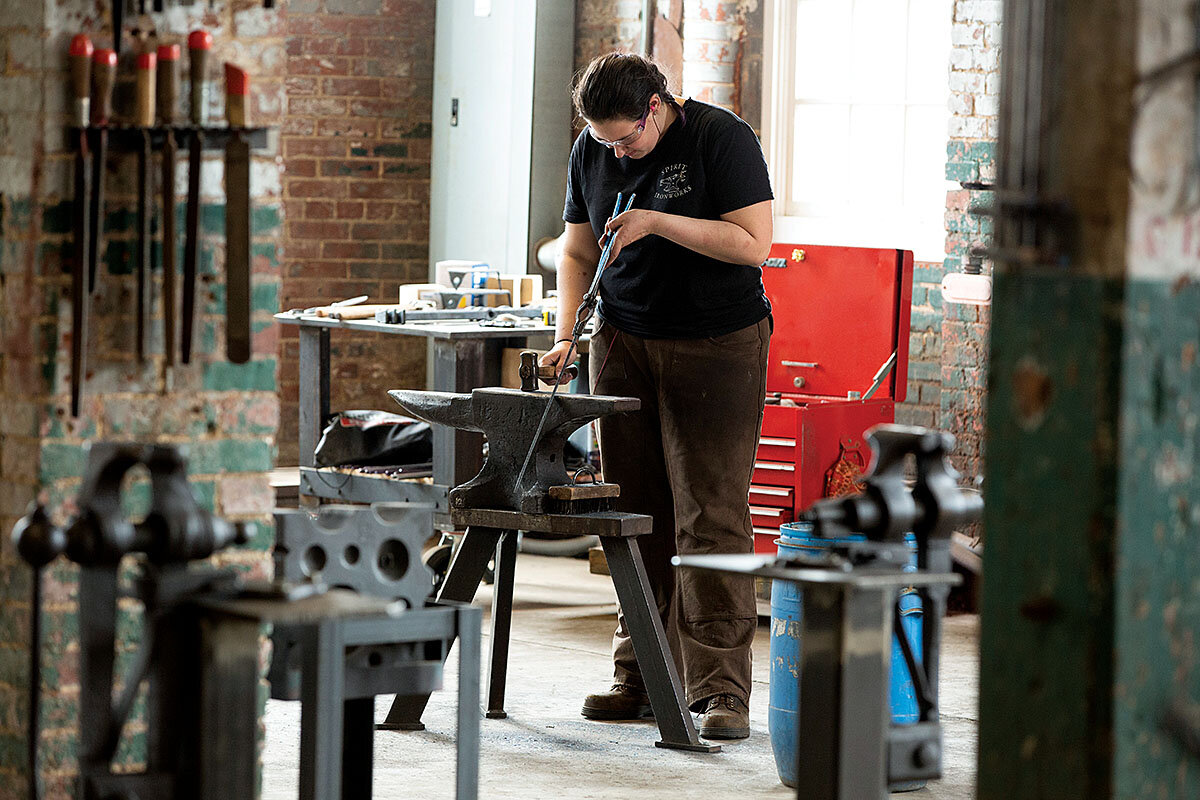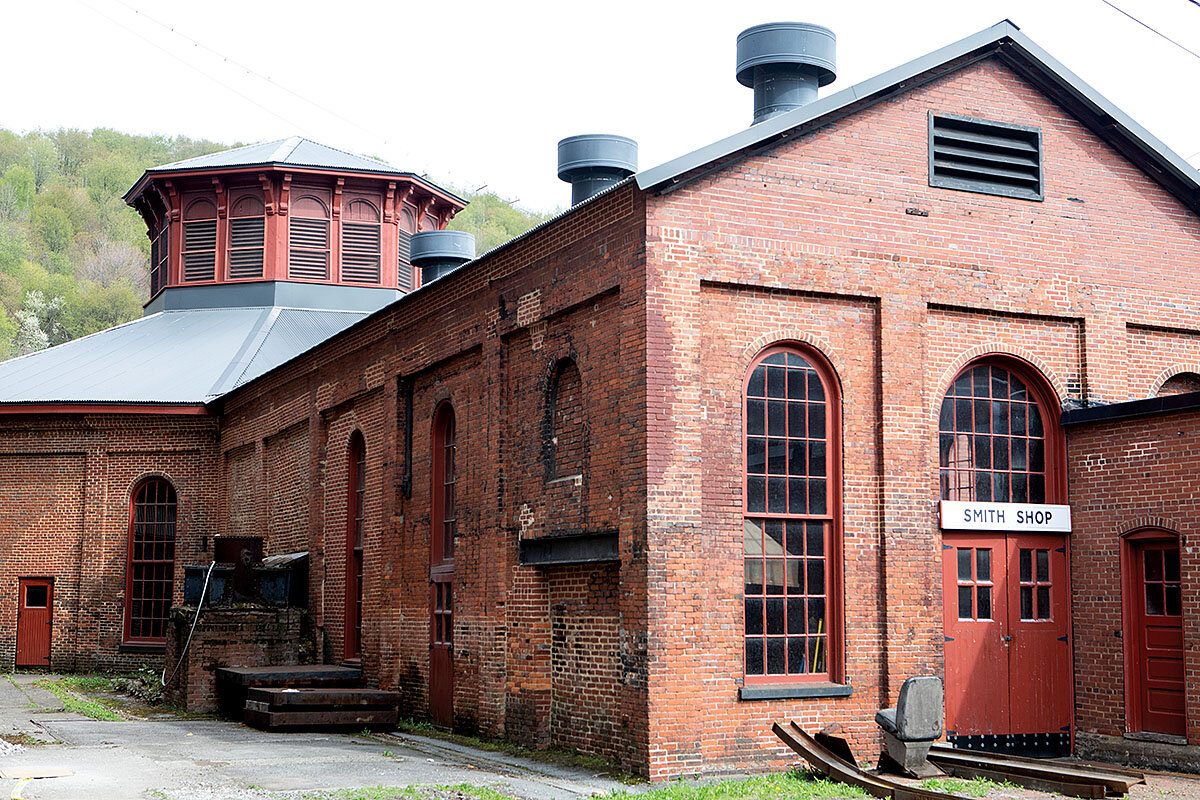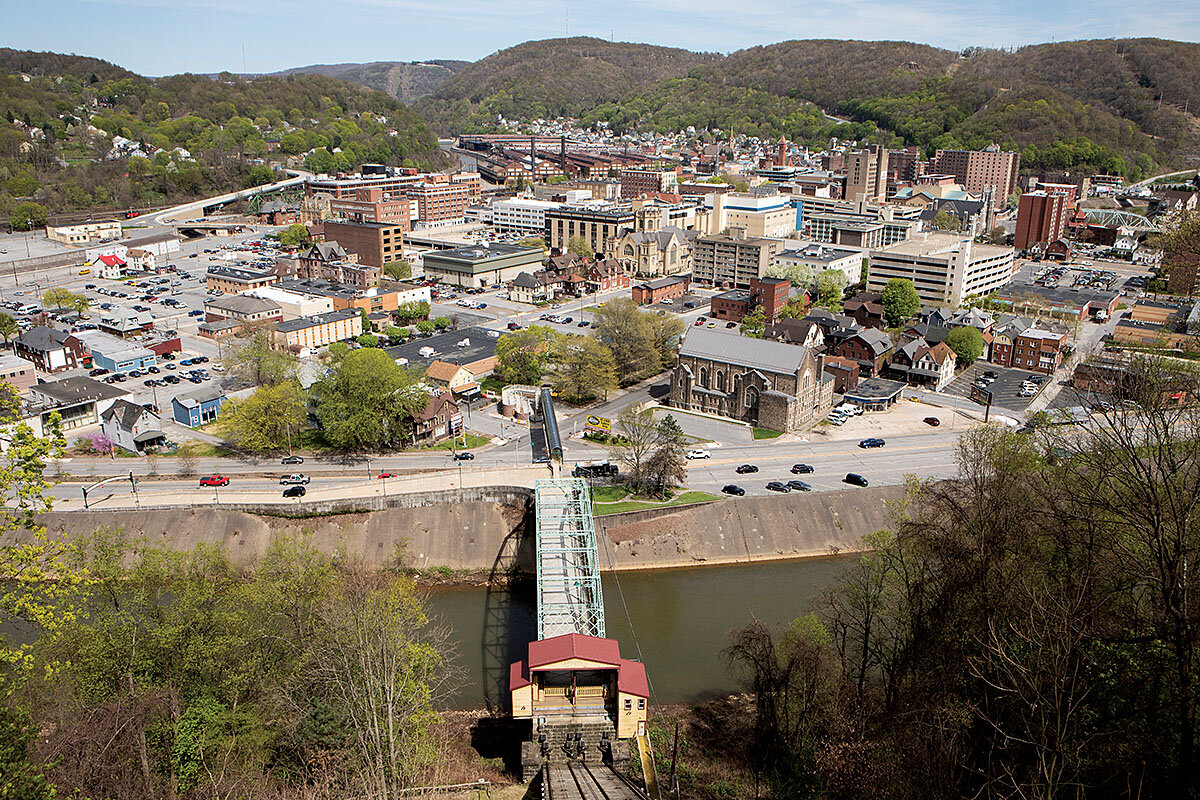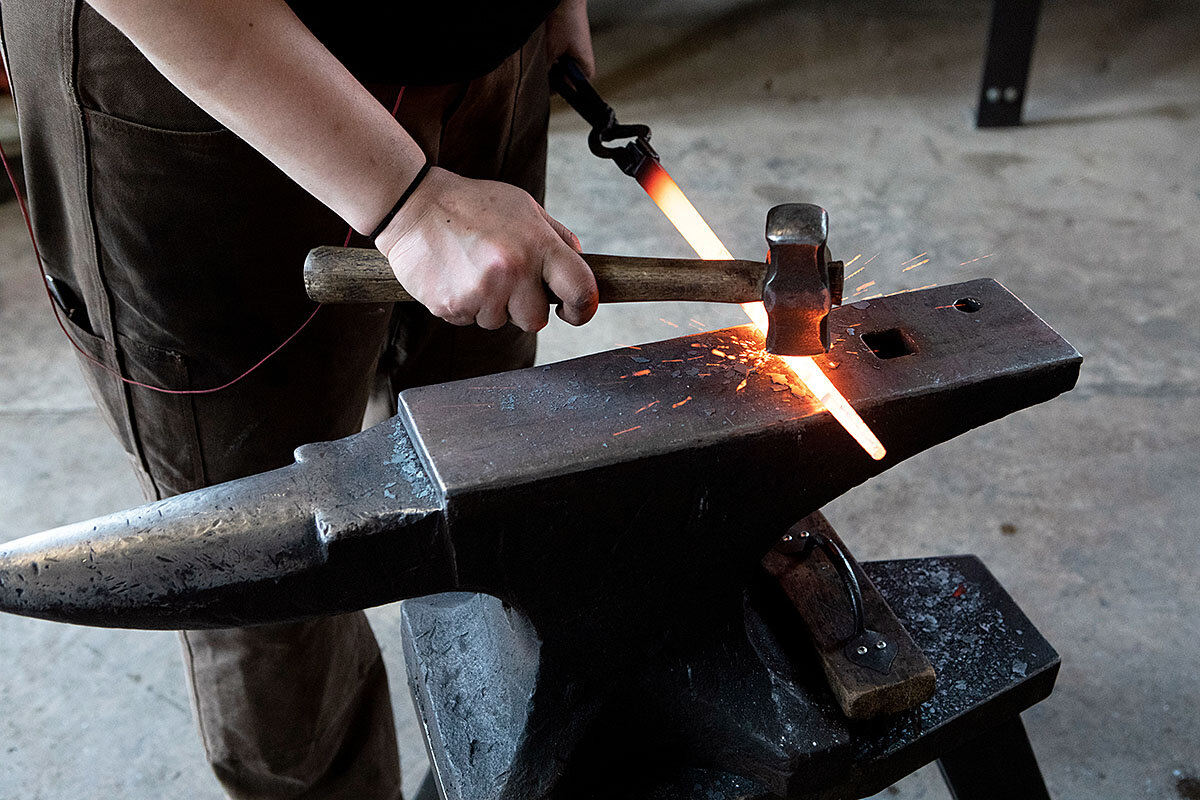How metalsmith revival is forging better future for a steel town
Loading...
| Johnstown, Pa.
Standing in the middle of a 19th-century blacksmith shop, part of what was once a bustling steel mill in Johnstown, Pennsylvania, Patrick Quinn is in awe.
“I would have moved to the end of the earth for this space,” he says.
Mr. Quinn points to the soaring octagonal ceiling and the red-brick archways that testify to the architectural heritage of this industrial building. The structure, which had stood vacant since 1992 when the mill closed, is now home to the Center for Metal Arts (CMA), a metalsmithing school.
Why We Wrote This
The old mill that once formed the economic heart of Johnstown sat empty for decades. Today, as it finds new life as a school, its community hopes it can help power a new future.
CMA draws students from across the country to take classes taught by a roster of visiting instructors as well as by Mr. Quinn, the center’s executive director, and Dan Neville, the associate director. They join other creative young entrepreneurs in building on local history as part of an emerging economic revitalization in this former steel mill town.
Metalsmithing, Mr. Quinn says, is experiencing a resurgence. CMA students include men and women, weekend hobbyists as well as career craftspeople. Working in a space constructed for the blacksmiths who fashioned wrought iron and steel into parts for the mill, the students handle a variety of metals and might produce kitchen tools or perhaps large-scale sculpture.
Anna Koplik carefully removes a piece of glowing steel from a forge and begins to shape it with a hammer. She was studying jewelrymaking at Pratt Institute in New York when she realized that she really loved blacksmithing. CMA offered her a six-month internship, prompting her to leave New York for Johnstown. She’s one of two current interns, who are given housing, training, and access to the shop for their own work.
“We’re teaching real-world skills, though some students may use them in nontraditional ways,” says Nick Anger, a visiting instructor. Renowned for his handcrafted chef’s knives, Mr. Anger is keenly aware that the tools he uses and the techniques he teaches are the same ones honed in pre-industrial America.
Linking back to steel’s history
A connection to the past resonates with many at CMA. This facility, after all, is part of the history on which they have built their careers. The only American steel mill designated a National Historic Landmark, it still houses the original 10-ton air hammers, one of them owned by the Smithsonian Institution.
When the Johnstown Redevelopment Authority (JRA) posted photos of the air hammers on the internet, word spread quickly. As part of a small, tightknit community, metalsmiths rely on social media to make connections, familiarize themselves with one another’s work, and share resources, Mr. Quinn says. He was blown away to discover the shop was available. For three years, he and Mr. Neville had been operating CMA in upstate New York. The school, which has been in operation since 2003, had outgrown its existing facility but efforts to expand in its former location were not economically feasible.
The move to Johnstown has exceeded their hopes. The center leases the space from the JRA, an urban renewal entity that owns the cluster of historical buildings. A grant from the Community Foundation for the Alleghenies, a regional philanthropic organization, paid the moving expenses.
“We welcomed them with open arms,” says Melissa Komar, executive director of JRA. Ms. Komar, a Johnstown resident who describes herself as “born and raised and chose to stay,” has been involved in the effort to draw new business to the economically depressed area.
Many young people have left the once-thriving steel town. As opportunities waned and Johnstown struggled to attract new businesses, the population slipped along with the economy.
The trend reflects a reversal of the town’s history. Immigrants had started arriving in the 1870s, and by the early 1900s, they had moved to the area in droves, finding steady employment in the mill. By 1920, Johnstown’s population exceeded 67,000 residents. Steel production peaked in the building boom that followed World War II. But by the 1970s, the steel industry was beginning its long slide, and the town’s population declined steadily in the decades since. By 2017, Johnstown was home to just over 19,000 residents.
As Mike Kane, president of the Community Foundation, explains, some of that decline is due to people moving to the nearby suburbs and neighboring communities. But he says it also reflects the impact on the community of losing what was once its primary employer.
In 1973, Bethlehem Steel had employed 11,800 workers for its Johnstown plant. By 1982, that number had dropped to 2,100. In 1992, the company locked the doors and walked away, abandoning the mill and sending the local economy into a tailspin. Last September, the online news outlet 24/7 Wall St. named Johnstown “the poorest city in Pennsylvania.”
But this is a city that wasn’t going to give up.
Capitalizing on Johnstown’s assets
“Johnstown’s history is its future,” says Richard Burkert, president of the Johnstown Area Heritage Association.
Many of the same features that drew people to the area a hundred years ago – a strong sense of community, scenic waterways for transportation and recreation, affordability – are enticing a new generation. Chief among these might be opportunity.
Business leaders and government officials looked upon the abandoned mill as a prime opportunity, one that could help move the city forward. While steel companies had been tearing down mills across the country and selling off the metal for scrap, that couldn’t happen in Johnstown. Its landmark status prohibited such destruction.
Instead, the JRA assumed ownership. After addressing environmental issues, the authority first sought to return the structure to commercial use. When that plan did not work, they searched for alternatives – and found the guys from the Center for Metal Arts.
The school has become part of a nascent economic revival, one driven largely by young people making the most of the affordable real estate that allows them to start small businesses.
As a result, longtime business owners are benefiting from the increased foot traffic around town. These new ventures are changing the town in other ways as young artisans and creative entrepreneurs settle in an area that many characterize as “Trump country.”
Mr. Quinn, a self-professed liberal, says he once wondered if he could live comfortably in a community where bumper stickers supporting gun rights or the current president are common sights. He admits he does not share these perspectives. But he does have a passion for his craft and feels a strong connection to the history of the area. That is something he shares with many residents and it has been enough to make the arrangement work.
The school welcomes anyone with an interest in metalsmithing regardless of political persuasion, gender, or race. For safety reasons students must be over the age of 16 to enroll.
Back at the shop, Mr. Anger demonstrates the art of producing Damascus steel, a technique that traces back to the third century. Standing at a table salvaged from the old steel mill, he selects and arranges the thin layers of metal that he will then forge in a nearby furnace. He explains that the steel’s strength and ability to hold a sharp edge makes it ideal for chef’s knives.
Mr. Anger emphasizes that all of the work produced at CMA requires care and attention to detail, qualities vital to producing a good product. “We’re not just whacking at metal here,” he says.










